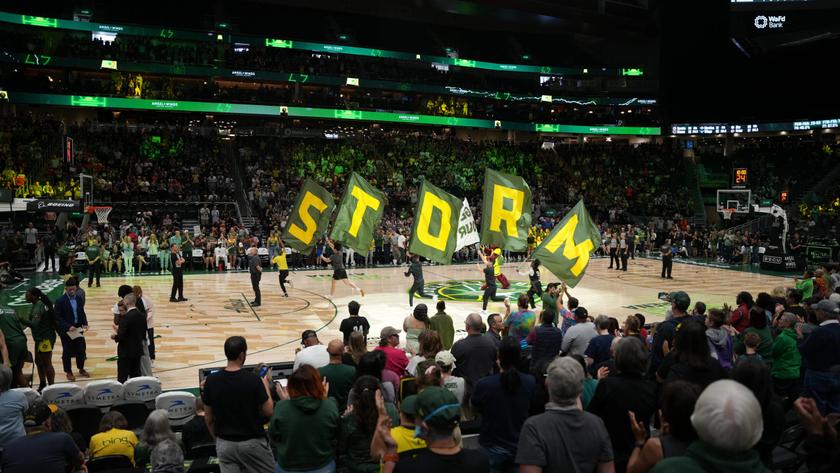Large vs. Small Sensor: A Q&A With Canon’s Larry Thorpe
Larry Thorpe, Canon
ALEXANDRIA, VA.—Larry Thorpe has a long industry background in imaging. A senior fellow of the imaging technologies and communications group (in the professional engineering and solutions division) of Canon U.S.A., Thorpe is a renowned expert in the field of video acquisition.
A visionary who spent more than 20 years at Sony pioneering the development of HD and digital production technologies in the U.S. broadcast and motion picture industries, Thorpe holds 10 patents in the field of broadcast development. He has also authored or co-authored a variety of papers on camera technology, HDTV imaging, HD lenses and optics.
As a result of his leadership, contributions and achievements, Thorpe received the NAB 2000 Television Engineering Achievement Award, the Montreux 2000 Gold Medal Award for Digital Cinematography, and in 2004, the Broadcasting & Cable Technical Leadership Award in 2004 and the Television Academy’s Charles F. Jenkins Lifetime Achievement Award in 2014. Thorpe has also held senior positions at RCA, and in 1981 was awarded the David Sarnoff Award for his innovations in automatic studio color cameras.
Thorpe is an IEE graduate (1961) of the College of Technology in Dublin, Ireland, and received his Chartered Engineer (C. Eng.) and MIEE distinction in 1965 from the Institute of Electrical Engineers in London. He is a Life Fellow of SMPTE.
Thorpe graciously agreed to answer some questions for Broadcast Engineering Extra about camera sensor sizes and their effect on production.
This is what it looks like when you attach a $1,300 large-sensor camera to a 55x box lens.
In the meantime, a video tinkerer with time and money decided to see if an expensive high-quality studio/sports box lens could be attached to a relatively inexpensive large-format sensor camera. A YouTube user called SirJonnyCargo fitted a $60,000 55x Fujinon lens with a $1,300 Panasonic Lumix DMC-GH4 camera and got surprisingly good results.
Back to Larry Thorpe:
BE Extra: In terms of sensor size and configuration, what type of camera do you recommend for episodic TV production? Why?
Thorpe: Super 35mm large-format lens and single-sensor camera are recommended for your typical episodic. This is because episodics were for many years shot on 35mm film and that cinematic look is strongly established. A broad range of S35mm lenses—both zooms and primes—are readily available, and their unique optical characteristics are also a significant contributor to that look.
BE Extra: Are there certain kinds of scenes when a different type of camera will give better results? If so, what’s an example?
Thorpe: There can be many scenes where a deep depth-of-field may be desirable, and here a small image format camera can be beneficial. There can be fast-action scenes and scenes entailing high mobility that can exploit the small physical attributes of some of the available small-format cameras.
BE Extra: What are the benefits of using multiple sensors (such as a three-chip camera) instead of a single sensor?
Thorpe: Tri-sensor cameras offer high sensitivity and excellent colorimetry. They are available in 2/3-inch image format size, and 1/2-inch and 1/3-inch—thus offering flexible options for increasingly deep depth-of-fields. They also directly originate full-bandwidth RGB 4:4:4 (no de-bayering algorithms being required), which certainly in the case of HDTV can make excellent final HD video.
Most strikingly, in broadcast television sports coverage—where very long focal length zoom lenses are a necessity—large-format lenses cannot compete with established 2/3-inch field lenses and cameras.
BE Extra: What about a station that wants to upgrade its news studio cameras and is thinking about leveraging the cost/performance of single large-sensor cameras? Good or bad idea?
Thorpe: Generally television station studios require a broad focal range zoom lens as well as wide-angle options. Studio box lenses are typically in the 25:1 zoom range. Studio portable lenses are generally in the 22-24:1 zoom range. Large-format zoom lenses don’t come close to such focal ranges.
Equally important is the expected systemization of studio cameras—requiring triax/fiber cabling to CCUs in central control rooms and also remote video operational panels. Few large format cameras offer such systemization, and those that do are very expensive.
BE Extra: Do you know if anyone is doing this?
Thorpe: Some stations and networks are using large format single sensor cameras for their news magazine shows where they seek a more cinematic look—especially for interviews. I know of no television station using a large-format camera for any cost advantages. Small format cameras are readily available from multiple manufacturers today that are highly cost-effective.
BE Extra: What are one or two important things regarding single large-sensor cameras vs. multiple small-sensor cameras that might not be immediately obvious?
Thorpe: A large-sensor camera sensor for HDTV generally has larger-sized photosites that offer greater dynamic range and lower noise than the small tri-sensor cameras. At a time when HDR is emerging as a desirable enhancement to digital imaging (both HD and UHD), this will become increasingly important.
Television stations that are considering acquiring new cameras need to first assess the nature of the program genres they will be originating. Some productions will find a shallow depth-of-field cinematic look desirable, while other shows will need to maintain the established look that is offered by small format lens-camera systems. Operational needs must also be factored in—and this entails lens focal ranges, viewfinder requirements and studio systemization. Interfaces must also be considered that can include possible teleprompter needs, placement of operational controls on the camera, menu designs, intercom, program audio, return videos to viewfinders and possible chromakey requirements.
Get the TV Tech Newsletter
The professional video industry's #1 source for news, trends and product and tech information. Sign up below.
Bob Kovacs is the former Technology Editor for TV Tech and editor of Government Video. He is a long-time video engineer and writer, who now works as a video producer for a government agency. In 2020, Kovacs won several awards as the editor and co-producer of the short film "Rendezvous."












